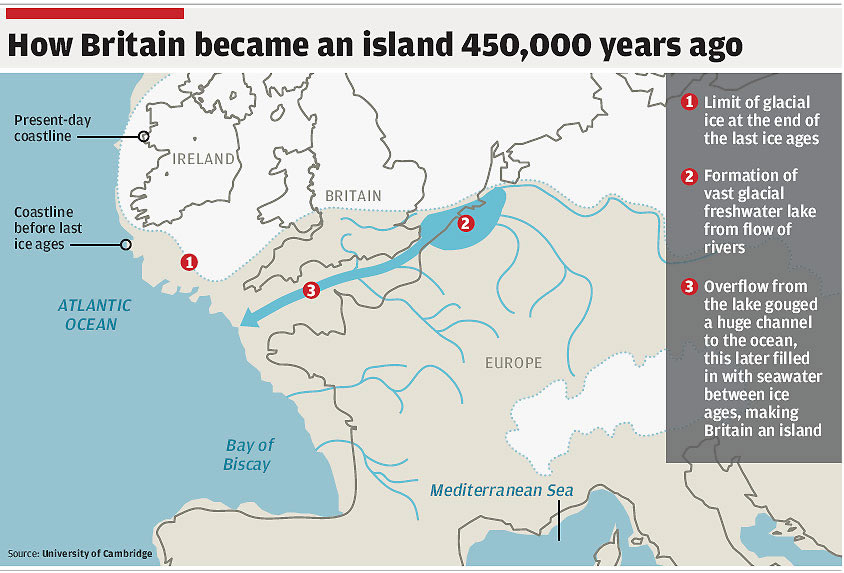Ice Age Guernsey – What was it Like ?
Guernsey and the other Channel Islands have not always been islands. In fact Guernsey has been an island and not an island several times over the millennia with the waxing and waning of various ice ages.
A Looong Time Ago …
 5 to 10 million years ago – Guernsey was on the sea bed, which explains why the top of the island around the airport and the top of Sark is now so flat.
5 to 10 million years ago – Guernsey was on the sea bed, which explains why the top of the island around the airport and the top of Sark is now so flat.
Since then – this part of the Earth’s crust has risen upwards, pushing the old sea bed 90 metres above the current sea level.
Since then Guernsey has become an island several times and during all this time sea and weather sculpted the land into the shapes we see today.
What was Guernsey like during the Ice Age?

sea levels fell, leaving the Channel Islands as no more than hills in an arctic plain
There has been more than one Ice Age and these have been happening for the past 2 or 3 million years. When the world gets colder, great sheets of ice spread out from the Arctic. At times, ice covered most of Britain and was up to 1.5 kilometres thick (15 times the height of Guernsey’s cliffs). As the ice sheets grew, sea levels fell, leaving the Channel Islands as no more than hills in an arctic plain.

Guernsey was at times as warm as Spain is now
Guernsey would have looked more like Finland than the place we know today. When the world warmed up, the ice retreated and the seas came back again. Guernsey was at times as warm as Spain is now.
So When Did Present Day Guernsey Appear?
Guernsey last became an island just over 11,000 years ago.
Guernsey, Herm and Sark were separated from the French mainland in about 9,200 BC. Sark was separated from the other islands in about 6,700 BC whilst Guernsey wasn’t finally separated from Herm until about 6,300 BC.
Furthermore, up until just over 200 years ago there were in fact 2 Guernseys ! [See out our article on how this was ‘resolved’
This Guernsey museum animated sequence takes us back 20,000 year in time showing the sea receding from it’s present day levels.
Will Guernsey always be an island?
Not necessarily. If sea level continues to rise, it will make the islands smaller. One day in the far future it may fall once more meaning we will once again be connected to France. It should be remembered that the ice ages have not ended. We now live in an ‘interglacial’, a warm period between ice ages.






